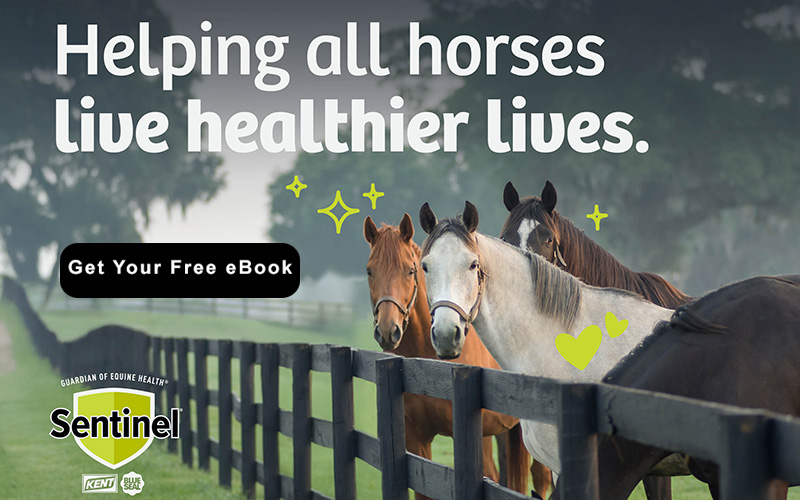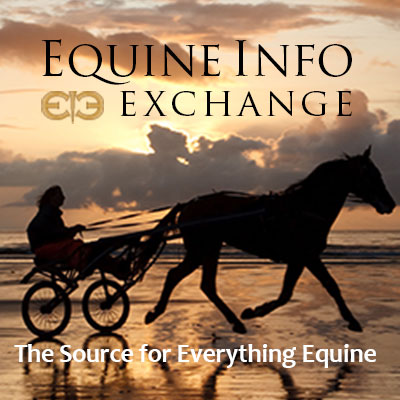Health & Education
We all want the best care possible for our horses. The Heath & Education section covers both Learning Institutions, Organizations as well as many sources for equine assistance including Veterinarians and Farriers.
For those who want a to formally study horses, the Education section includes College Riding, Equine Studies, and Veterinary Schools. Learn about the wide variety of horses in the Horse Breeds section. Supplements and Treatments Therapy are also included in the section.
Everyone can learn from Fine Art and there are some specialty Museums that might surprise you.
Horses as a therapy partner enrich the lives of the disabled. These facilities are listed in our Therapeutic Riding section. To help children and young adults build confidence and grow emotionally, please see the resources available on the Youth Outreach page.
Looking for a place to keep your horse? You can find it in the Horse Boarding section. Traveling? Find a Shipping company or Horse Sitting service if your horse is staying home!
Want to stay up to date with the latest training clinics or professional conferences? Take a look at our Calendar of Events for Health & Education for the dates and locations of upcoming events.
Do we need to add more? Please use the useful feedback link and let us know!
Equitopia traveled to Holland to investigate how a rider's shifting weight in the saddle effects the gait of a horse. Equitation seat specialist Tessa Roos and equine motion analyst Bert Lam strapped Pegasus Gait analysis sensors on a horse and collected data in various positions. www.EquitopiaCenter.com
Read more: Rider Biomechanics: Using Sensors to See How the Rider Influences the Horse (7:24)

by G. Robert Grisel, DVM
Foremost, we should consider the basic rationale behind why horses limp. Is it pain? Is it some biomechanical restriction that prohibits normal movement? Pain might be an inciter in some instances, but the uncomfortable horse actually limps in an attempt to avoid pain. The resulting gait abnormality, therefore, is a voluntary action executed by the horse to circumvent the problem as opposed to an involuntary product of the problem. This is an important distinction, because as observers we don’t directly appreciate the source of the horse’s pain. Rather, we see how the horse alters its movement to escape it.
Visual assessment of the horse’s physical adjustments relies on the art of pattern recognition, which is relatively simple once we know where to look, when to look, and what to look for. This concept is familiar to us, because all of us practice pattern recognition in one form or another in our daily activities/jobs. Horse trainers, for instance, regularly evaluate recurring patterns of body language expressed by riders, both correct and incorrect. Farriers, on the other hand, are accustomed to interpreting various patterns of hoof wear. In all cases, abnormal patterns can give us insight with regard to what might be going on behind the scenes. With practice, we will learn to use our pattern recognition skills to depict visual markers of lameness that were previously imperceptible.
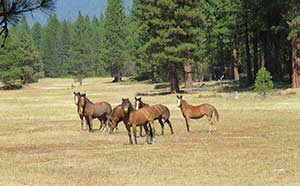
by Capt. William E. Simpson II - USMM Ret.
In the latest cooperative effort with a handful of visionary politicians, natural resource advocates and supported by noted wildlife biologist Craig C. Downer, rancher-author William E. Simpson II has opened a new line of communication with Siskiyou County, CA.
Here is an open letter by Craig C. Downer, Wildlife Biologist, followed by a response from Capt. Simpson.
"The pilot test of the Wild Horse Fire Brigade as proposed by Mr. Simpson is both ecologically and economically sound and solidly positioned upon well-established science [1]. Cultural and paleontological evidence from the locale shows that wild horses lived in the area of the Soda Mountain Wilderness area of Southern Oregon and Northern California for millennia and up until recent times.
"I spent 3-days on-site touring the landscape on foot and have evaluated the conditions of the local flora and fauna. From my findings, I concur with Mr. Simpson that there is a severe depletion of large-bodied native herbivores here. This situation has led to super- abundant vegetation to become intensively established throughout the landscape, a major portion of which is rocky and of rugged, accentuated topography. At present, the wild horses here are well below their carrying capacity for this particular ecosystem, and this ecosystem could greatly benefit from their increase. Other native herbivores have been and continue to be depleted by a robust population of lions and coyotes. The predated remains of adult and sub-adult wild horses are frequently encountered in this reserve along with scant remains of deer. I concur with Mr. Simpson that the use of livestock for fuel abatement would result in significant loss of animals and financial investment.
![A German Trakehner horse named SongLine relaxes as his acupuncture needles work at the new UF Equine Acupuncture facility. [Alan Youngblood/Staff photographer]](/images/stories/acupuncture/acupuncture003intro.jpg)
by Carlos E. Medina
The new University of Florida Equine Acupuncture Center in northwest Marion County will focus on treatment, education and research of the ancient healing art.
Dr. Huisheng Xie grew up in a family of Chinese herbalists who prescribed custom mixtures of herbs and plants to treat any number of human maladies. But he decided to apply the ancient practice of traditional Chinese medicine to the veterinary field, particularly to horses.
After 35 years practicing acupuncture and refining herbal medicines for animals, the doctor of veterinary medicine and a clinical professor of integrative medicine with the UF Department of Comparative, Diagnostic & Population Medicine, is celebrating the newly opened University of Florida Equine Acupuncture Center in northwest Marion County.
The center, a partnership between Xie and the UF College of Veterinary Medicine, includes a 6,240-square-foot barn with an attached 12,500-square-foot arena. It is located between Irvine and Flemington, on County Road 318.
For Xie, the growing acceptance of traditional Chinese medicine by the West is in stark contrast to what he faced when he started as a professor at the university in 1998.
"When I first started the job at the University of Florida, people talked about acupuncture like it was a joke. Now, over 90 percent of the faculty accepts it and refers cases to us," Xie said.
In the 20 years since he started with the university, a growing number of studies and continued research back the anecdotal benefits of acupuncture.

Why do we work with horses? Horse course, horse school, horse program, horse work, horse learning… whatever you want to call it; it is achieving a dream career for you and your horse. A Global Equine Assisted Learning Business Training™ (EABT™) company that works together to find success around the world, helping people to be empowered and helping them to change their lives while working with the horse. Through this powerful Horse Course which just isn't a dream; it's a reality, you will start your new business with your horse programs with confidence!
Read more: Equine Connection: International Horse Certification Course with Business Training
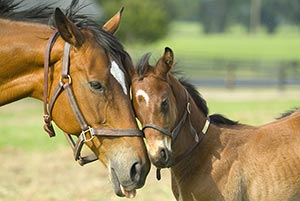
by Dr. Eleanor Kellon
With feral horses, by the time weaning occurs naturally both mare and foal are more than ready for it. When we hasten the process artificially, there is inevitable stress.
Foals depend on their dams for basic survival needs of nutrition and protection from predators or even other horses. The dam also gives the foal its social status in the band. Mares fulfill these functions because of the extremely powerful drive of their instincts and hormones.
Interfering with this bond predictably causes anxiety, even anguish. This means poor appetite, vocalizing, pacing (or running if room allows), poor concentration and diminished awareness of people, other animals, even physical barriers. In the worst-case scenario, they may be a danger both to themselves and others.
A variety of methods are used, from gradual lengthening of periods apart to abrupt complete separation. When separation is final, mare and foal should not be able to see or hear each other. Foals do best either housed in individual stalls or pastured in a group of familiar peers with at least one quiet and tolerant adult baby sitter.
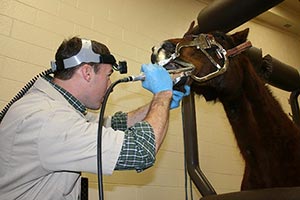
by Dr. Brad Tanner
Why float teeth, ancient wild horses seem to have done fine without dentist?
Good point and I agree it seems ancient wild horses did great without rasping of their teeth. The horse has evolved to be a grass consuming machine. Through the course of millennia, they have developed long teeth that continue to erupt (grow) throughout life.
It is important to know that the horse evolved to graze and chew up to 16 hours daily on coarse, fibrous grasses. Modern domesticated horses may spend much of their time in stalls, eating concentrates and hay, chewing much less than those on pasture.
Modern domesticated horses with pasture access typically graze on manicured grasses that are comparatively delicate and lack the gritty silica content consumed by their ancestors and cause less tooth wear. Additionally, as a horse chews grain its lower jaw does not move side to side with the same amount of travel as when chewing grass.
This decrease in chewing motion results in much sharper points developing and at a quicker rate then in horses eating only grass.
Read more: Dental Basics: The Who, What, When, How and Why of Floating Teeth

by Margret Henkels
Clients often ask me how I got into horse myofascial bodywork. A passion for horses, and my own personal experience of being completely healed, brought me to this work—Conformation Balancing. A riding fall at 28 brought chronic injuries lasting years. I knew nothing about fascia (connective tissue) and its role in organizing the entire body. A synchronicity at a horse show introduced me to Steve Evans, a Heller Work practitioner. Heller Work is an offshoot of Rolfing and trains people in its particular approach to fascia. The weekly myofascial-release sessions transformed me into fitness. Each week, for 15 weeks, I drove to Taos where Steve lived and returned feeling better. I loved the changes I felt and the work itself. My experience is that Heller Work is much less strenuous tissue work and is comfortable for the patient, even in the first session, unlike Rolfing, which is known to be strenuous.
On his table, I talked about my horses often and told him stories of my rides. Steve suggested I consider getting into the horse bodywork field. “Just what I need, another startup,” I said with a laugh. His suggestion seed grew. The changes I felt transformed my goals. Paperwork and financial data of the business world lost their charm. I felt amazingly better and fit enough to work with horses. He referred me to Equine Natural Movement, Heller for Horses, in Battle Ground, Washington, where I took a module of training, before certifying.
In myofascial-release training, I heard the call of the physical world. And, I learned something completely new: how hidden feelings surface when myofascial cells open as they release compression, and in the process, release trauma that has been held in the body. The emotional and spiritual transformations that occurred during myofascial change fascinated me: this clearing of trauma by bodywork is part of the amazing miracle of myofascial change. In sessions with horses, I watched horses change emotionally and trust me. Horses in pain wanted help.

Timing is everything. Nowhere is this more relevant than when preparing an elite equine athlete for a race.
Thoroughbred trainers are critically aware of the importance of fine-tuning the feeding and exercise regimes of their charges in the months, weeks and days before a big event. Timing is also critical for the smooth functioning of a horse’s musculo-skeletal system for optimal performance. Understanding how the horse’s muscle physiology works in synchrony with its environment and reacts to the exercise regimes that we subject it to in our daily management has been the focus of much research at University College Dublin by Dr. Barbara Murphy and her team.
All animals possess an internal body clock that ensures functions such as muscle metabolism, digestion and tissue regeneration and repair peak at the most suitable time of day to ensure survival in the wild. This important system, called the circadian system, uses the continuous 24-hour transitions from night to day to generate rhythms in physiology and behavior that allow a horse to stay in harmony with its environment. Each organ in the horse’s body undergoes rhythmical 24-hour changes that respond to the environmental cues provided by the changing light-dark cycle, food availability and exercise. How we time feeding, and in particular, exercise, has important implications for equine performance and will be explored here.
Domestication has changed many aspects of a horse’s daily life. To understand the impact human intervention has had on the horse’s body clock we must first consider their natural behavior. As migrating herd animals bound by tight social bonds, horses evolved to spend up to 18 hours a day grazing as a group constantly on the move, covering anywhere from 40 -100 km in a day.
Now consider the lifestyle of today’s thoroughbreds in training – stabled for up to 23 hours a day, isolated from a herd, fed concentrated feed at set intervals and often only exercised once per day at the same time each day. Each of these factors is accompanied by impacts on a horse’s health and performance. Gastric ulcers, respiratory disorders and stereotypic behaviors are some of the common challenges faced by trainers and are often a direct consequence of an intensive indoor management regime – a necessary evil in the business of training elite athletes.
Read more: The Effects of Routine Morning Exercise on Muscle Response
- Is the Great British Shire Horse About to Go Extinct?
- Red Light at Night Facilitates Recovery and Rest
- Breathing Easy: A Key to Equine Health and Performance
- Alfalfa and the Insulin Resistant Horse - The True Story
- Burning And Learning?
- The Canadian Horse: Discover a Versatile Breed Rich in History
- Core Equine Disease Risks Increase Amid Mosquito Season
- Equilume Stable Light Can Influence Body Composition and Biological Rhythms in Horses-in-training
- Inflammation: It’s Not Just In Joints
- Horsepower: How Digital Technology is Transforming the Equine World
- Exercising and Training Horses in Hot Weather
- Choose Hemp Instead of Soy for Your Horse!
- Equine Odontoclastic Tooth Resorption and Hypercementosis
- What is the Ideal Conditioning Program for an Eventer?
- Is Your Horse a Slave in a Sand Box?
- Surprise! It's Twins!
- Dental Surgery and Extractions
- A Rejected Foal and a Brokenhearted Mare Saved Each Other
- Miniature Horse Therapy: Great Big Good Things in Small Packages
- Man O’ War Project Helping the Soldiers of War Heal






